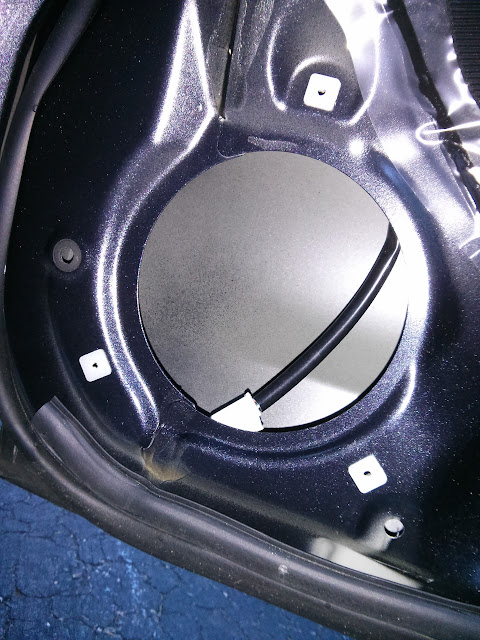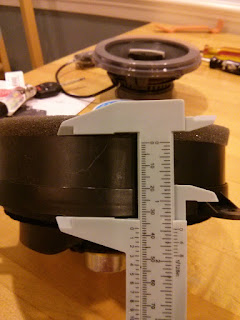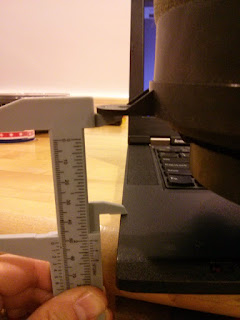Last night I figured out which way the spacers mate to the door. They are not symmetrical, so you can't tell without aligning them to the door and checking that the holes line up.
When securing the spacers to the door, you want the surface between the spacer and the door to be sealed such that no air escapes and there are no loose surfaces to rattle. You can use weatherstripping foam, in a roll, adhesive backed to seal the surface. It looks like I will make a circle of foam on the spacer and a circle of foam on the door. the foam compresses very well so I think this plan with create a relatively tight seal. I could probably seal the gap closer to 100% with silicon caulk, but I'd rather do the less obtrusive tape for now.
After test fitting the spacer, I passed a length of speaker wire through the rubber channel that goes between the car pillar and the door. There are already OEM speaker wires and power window wires in this channel, so I had to add the speaker wire. I figured to do this now so that I won't have to mess with running a speaker wire in a hard spot when the spacer and speaker are already installed. I'll switch over to the speaker wire when I install the amp in phase two, but for now the wire can just hang.
Finally I pre-drilled the speaker to the on spacer. I'm going to use 4 x 8-1/2 sheet metal screws to secure the speaker to the spacer. The speaker itself came with 8- 1/4 (or maybe even 8-1/8" sheet metal screws) - tiny screws. they will work too and I might implement them if I don't get to the store to get the 1/2" length. Actually I believe that by anchoring the screws a full 1/2" into the plastic, it will strain the spacer less.
So I did a lot of fitment. I think I'll take more explicit pictures when I wire up the second rear door, after I figured out and executed the process once.



























